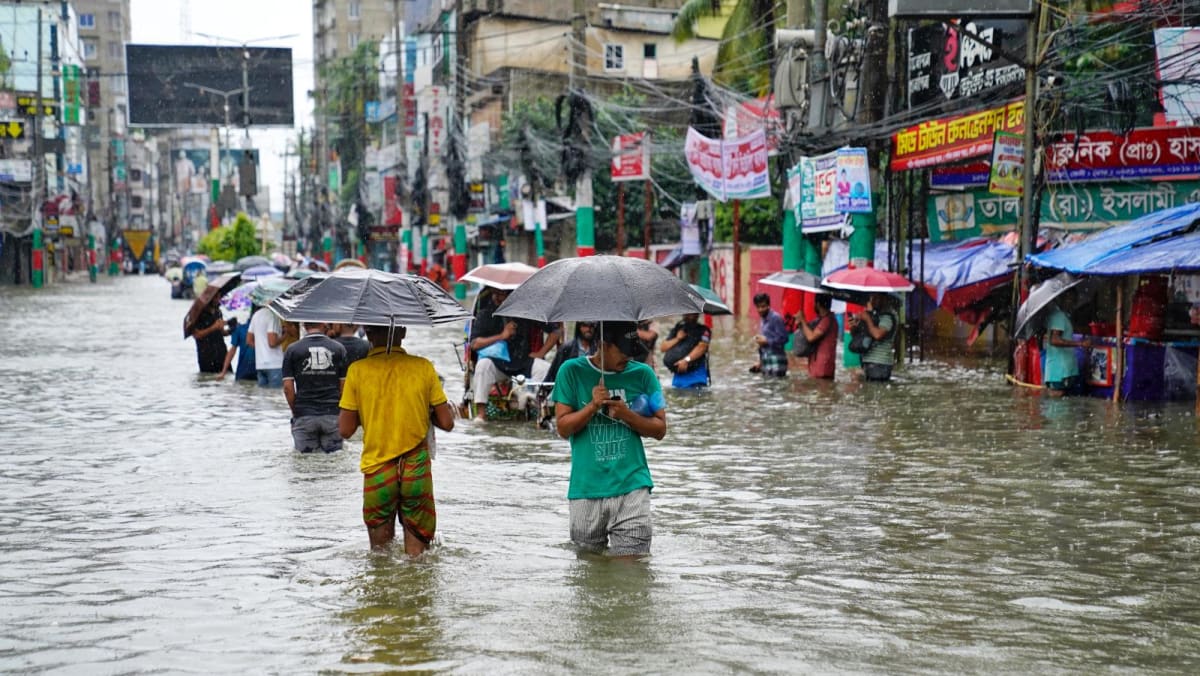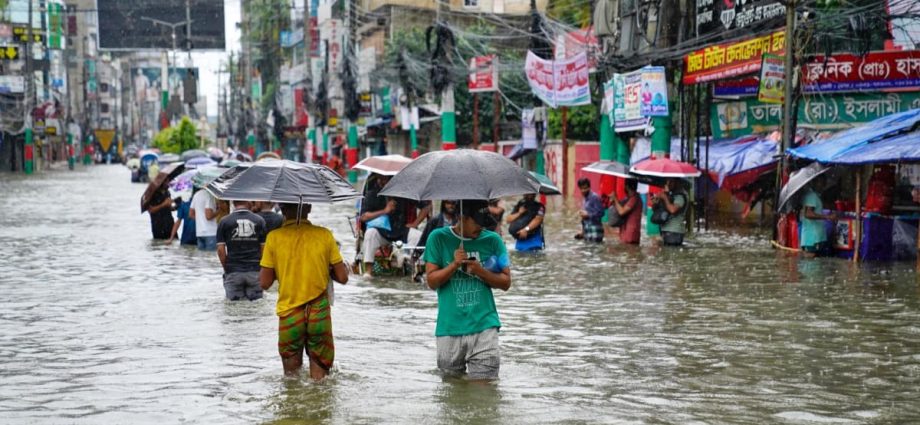
An analysis in 2015 by the World Bank Institute estimated that 3.5 million people in Bangladesh, one of the world’s most climate-vulnerable countries, were at risk of annual river flooding. Scientists attribute the exacerbation of such catastrophic events to climate change.
Late on Wednesday, students in Dhaka held protest rallies, alleging that the floods were caused by the opening of dam sluice gates in neighbouring India.
India’s foreign ministry said it was “not correct” that the floods were caused by water released from the Dumbur dam on the Gumti River in the northeastern state of Tripura.
“We would like to point out that the catchment areas of Gumti River that flows through India and Bangladesh have witnessed the heaviest rains of this year over the last few days,” the ministry said in a statement on Thursday.
“The flood in Bangladesh is primarily due to waters from these large catchments downstream of the dam.”
In Tripura, 12 people have died due to landslides and floods triggered by the incessant rain of the past three days, Suman Deb, an Indian disaster management official, told Reuters.
“The impact has been devastating and rescue operations are ongoing,” Deb said.
India’s interior minister, Amit Shah, said in a post on X that the federal government has rushed disaster management teams, apart from boats and helicopters, to Tripura to assist the state government in relief and rescue operations.
“Floods on the common rivers between India and Bangladesh are a shared problem inflicting sufferings to people on both sides and requires close mutual cooperation towards resolving them,” India’s foreign ministry said.

